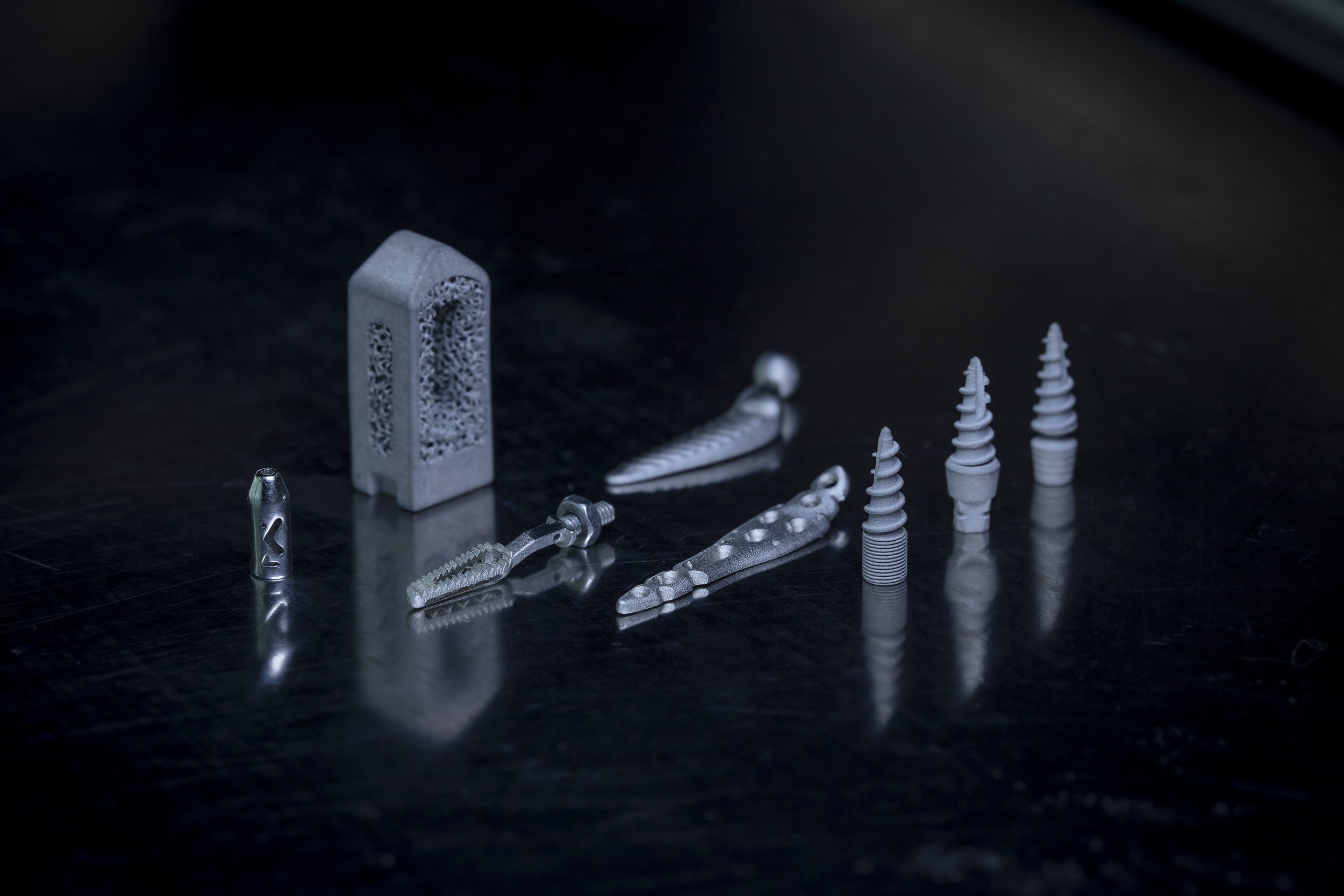Unlocking the 3D Printing Potential of LMM for Medical Devices
Metshape GmbH, based in Pforzheim, Germany, is using Lithography-based Metal Manufacturing (LMM) to produce tiny, complex, and highly precise metal components for medical technology. This additive process enables the series production of innovative medical parts, even in large quantities. Yet, according to Dr. Lucas Vogel, CEO of Metshape, international interest in LMM technology currently surpasses that seen within Germany.
Additive Manufacturing Meets Medical Technology
With today’s technological progress, 3D printing offers viable solutions for a wide range of applications. While rapid prototyping remains more common, additive manufacturing of series components is increasingly being adopted — particularly through powder-based processes such as Laser Powder Bed Fusion and Electron Beam Powder Bed Fusion.
These methods are already used for serial production of hip cups or spinal implants.
However, Metshape has taken a different approach, focusing on the miniaturization and microfabrication of metal components using LMM technology, which offers unique advantages for medical applications.
Advantages of the LMM Process
The Lithography-based Metal Manufacturing (LMM) process combines metal powders with a photo-reactive binder, enabling the production of highly detailed structures with wall thicknesses as small as 100 micrometers.
Key benefits include:
Excellent surface quality: Ra values between 2–3 µm without post-processing and below 1 µm with finishing.
Rapid design iteration: No tooling required, unlike with Metal Injection Molding (MIM).
Scalable production: From single custom parts to millions of complex components.
Metshape is currently working with a major international medical technology company to develop a Nitinol component used in combination with catheters. The use of LMM technology for this application is expected to deliver significant cost savings while maintaining the required precision and reliability.
Global Interest Outpaces Domestic Adoption
While awareness of LMM is growing, interest from international MedTech companies is far stronger than that from German manufacturers.
Dr. Vogel explains:
“We are running several projects in Germany, but six times as many with companies abroad. International partners often show more openness and courage to question existing production norms — without stepping outside regulatory frameworks. Together, we can rethink and develop innovative, compliant solutions that fully leverage the advantages of LMM.”
In every project, Metshape evaluates both technical feasibility and economic competitiveness to ensure sustainable implementation.
Overcoming Preconceptions About 3D Printing
Some hesitation toward additive manufacturing stems from early negative experiences during the technology’s initial development phase. Dr. Vogel notes that many companies tested early 3D printing solutions and found them suitable for prototyping but not for serial production.
However, the technology has evolved significantly since then.
“Our current projects clearly show that additive manufacturing — especially LMM — has the potential for serial production, even in the highly regulated field of medical technology,” says Vogel.
Applications in Modern Medical Devices
LMM is particularly advantageous for complex components used in catheters, endoscopes, and other surgical instruments. Metshape collaborates with partners across Europe, the USA, India, and Israel, and is also involved in a publicly funded project with a Dutch partner to develop a new type of medical device.
This innovative device aims to connect tissue sections during intestinal surgery through compression, offering an alternative to traditional staples or sutures.
Precision and Materials
Metshape’s LMM process produces precise and filigree parts small enough to fit into a two-centimeter cube. Current materials include:
Stainless steels
Titanium Grade 5
Nitinol
These materials open up a wide range of applications, including endoscopic tools, cardiovascular components, and connection elements. For Nitinol parts, LMM prevents contact with other metals, reducing the risk of galvanic corrosion.
For stainless steel components, Metshape already meets all industry standards. In titanium alloys, ongoing R&D is focused on achieving even higher chemical purity — an essential factor for long-term implant applications.
The Future of Serial Additive Manufacturing
According to Dr. Vogel, LMM can drive innovation and efficiency in MedTech manufacturing, combining technological precision with cost-effectiveness:
“Internationally, we already see additive technologies being used successfully for serial production — and we should take greater advantage of this potential here in Germany as well.”
Read the full article here:
https://medizin-und-technik.industrie.de/3d-druck/3d-druck-potenzial-von-lmm-fuer-medizinprodukte-nutzen/#slider-intro-2

